 Facebook
Facebook
 X
X
 Instagram
Instagram
 TikTok
TikTok
 Youtube
Youtube
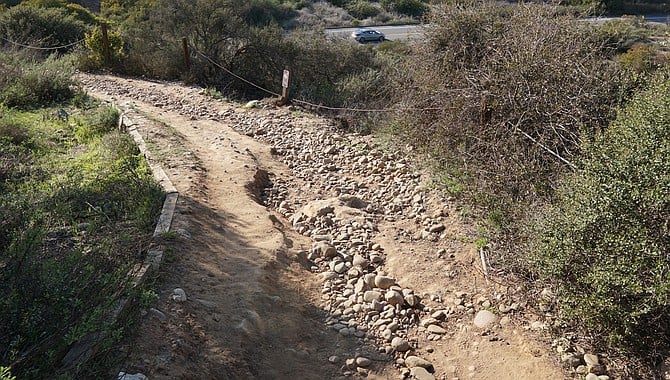
Late last April, City of San Diego parks that had been closed since the onset of the Coronavirus pandemic began to re-open. As gyms stayed shutdown and tennis and basketball courts remained off-limits, people began to flock to the open-space areas to stay in shape. The grassy lawns of Morley Field just off Upas Street were suddenly packed with fitness classes that were attempting to stay alive minus their typical indoor locales. Seeing a couple of ripped bodybuilders with their weight bench set up next to a sidewalk in the park side didn’t seem nearly as weird as it should have — everybody seemed to be turning the park into their new gym.
The trails at Morley Field filled up too. There were more hikers, runners, and bikers packed into the Florida Canyon trails than I have ever seen. As a result of the increased presence, the trails took on additional wear and tear. But repairs will apparently have to wait.
The San Diego Mountain Biking Association completed maintenance on the trails in Florida Canyon in 2019 and (pre-pandemic) 2020. According to Ben Stone, the trails coordinator for the biking group, they typically have a five-month window that centers on San Diego’s winter months to complete this work. The key is the rain adding moisture to the soil. You can bring in your own water and work in the dryer months, but, according to Stone, that “takes about twice the time it does to do the same thing when you have moisture in the soil.”
Stone is hoping that the rainy season stretches into April this year and that the city of San Diego gives the green light to allow the mountain bikers to complete more of these trail maintenance projects before everything dries up.
“Nearly every land manager in San Diego let us start getting back to the volunteer activities this winter with the exception of the city of San Diego,” Stone explained. “We even had a phone call with the head of parks and recreation, Andrew Field, and asked him to consider it. His response was that at this time the city is still not allowing it. As of right now, the biggest recipient, generally, of our volunteer labor and our paid staff labor is the city of San Diego.”
Last winter, Stone and his crew of 12-15 volunteers worked six four-hour events at Florida Canyon. Their work is still evident via the “rolling grade dips” that are present on the trails they repaired. On the trails, these come across as occasional angled bumps, but they’re actually drains. “You install drains at intervals based on how steep the trail is,” Stone explained. The drains allow the water to flow off the trail downslope instead of following the actual path of the trail and forming large ruts.
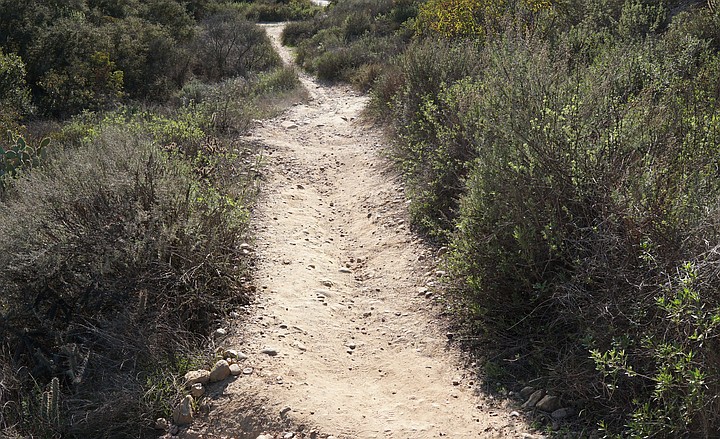
“The worst thing that happens is that if you develop a rut in the middle of the trail, people start using the trail on either side of the rut,” Stone said. “What happens is that the trail, unfortunately, widens as people just make a path walking on it. You want to help the water kind of choose a side so that you can keep the trail as a narrow trail and not expand it to five or ten feet in some areas.”
Another element playing into the widening of the trails is pandemic behavior. The trails are packed, but they’re filled with humans eager to avoid contact with one another. “There’s more volume of people literally on the trail which is causing them to not want to get too close to people in a narrow trail,” Stone explained. “They’re walking off-trail to avoid other people. So, they’re widening our trails because they don’t want to get close to each other.”
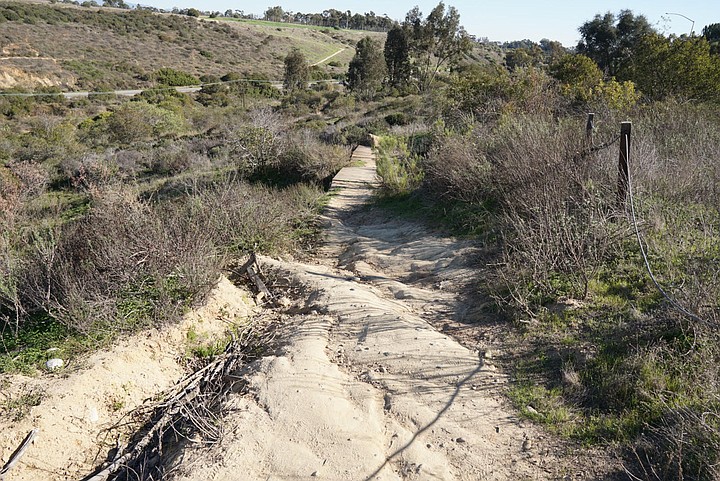
Many of the trails in the Morley Field and other city-owned parks are what Stone refers to as “legacy trails.” These are trails that were present when the city purchased the open-space properties which turned into these city parks. These trails were often created via unplanned access routes that, over time, became the primary trail systems in these areas.
“The ownership comes into the city and the city goes, ‘Well, just from an environmental standpoint it’s easier to just take the trails we already have than try to create new ones.’ Then we end up with these legacy trails that never should have really existed in the beginning,” Stone said.
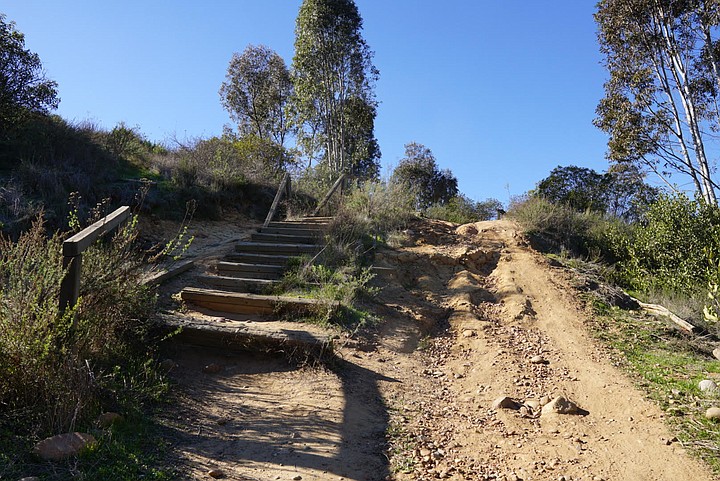
Besides Morley Field/Balboa Park, Stone cites other areas such as Tecolote Canyon, Rose Canyon, Mission Trails, and Los Penasquitos Canyon Preserve as other city parks that have “a lot of legacy trails that are in really rough condition.” As for the issues that need to be repaired at the Morley Field trails, Stone summed it up by saying “There are so many bridges out. Creek crossings that don’t have a bridge. Staircases that don’t exist in their entirety anymore. The whole canyon is kind of one giant hazard.”
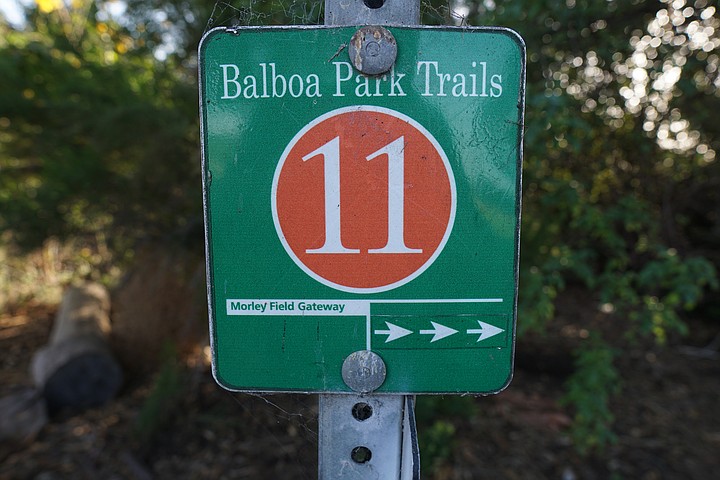
He continued, “At this point, no one really does this work. The city of San Diego doesn’t have any dedicated trail workers per se. I don’t think they have for a long time. Rangers maybe used to do some of this work in the past, but they’re completely overwhelmed by the volume of use, the trash, the parking issues, and the vandalism that just come with a higher volume of people. There are more people getting lost calling for help. There are more people getting injured out on trails or not bringing enough water because they’re unprepared and sort of new to trails. The rangers have no capacity to take on this regular maintenance, and there are some other organizations who do some minor trail work, but they’re basically in the same situation that we are.”


Late last April, City of San Diego parks that had been closed since the onset of the Coronavirus pandemic began to re-open. As gyms stayed shutdown and tennis and basketball courts remained off-limits, people began to flock to the open-space areas to stay in shape. The grassy lawns of Morley Field just off Upas Street were suddenly packed with fitness classes that were attempting to stay alive minus their typical indoor locales. Seeing a couple of ripped bodybuilders with their weight bench set up next to a sidewalk in the park side didn’t seem nearly as weird as it should have — everybody seemed to be turning the park into their new gym.
The trails at Morley Field filled up too. There were more hikers, runners, and bikers packed into the Florida Canyon trails than I have ever seen. As a result of the increased presence, the trails took on additional wear and tear. But repairs will apparently have to wait.
The San Diego Mountain Biking Association completed maintenance on the trails in Florida Canyon in 2019 and (pre-pandemic) 2020. According to Ben Stone, the trails coordinator for the biking group, they typically have a five-month window that centers on San Diego’s winter months to complete this work. The key is the rain adding moisture to the soil. You can bring in your own water and work in the dryer months, but, according to Stone, that “takes about twice the time it does to do the same thing when you have moisture in the soil.”
Stone is hoping that the rainy season stretches into April this year and that the city of San Diego gives the green light to allow the mountain bikers to complete more of these trail maintenance projects before everything dries up.
“Nearly every land manager in San Diego let us start getting back to the volunteer activities this winter with the exception of the city of San Diego,” Stone explained. “We even had a phone call with the head of parks and recreation, Andrew Field, and asked him to consider it. His response was that at this time the city is still not allowing it. As of right now, the biggest recipient, generally, of our volunteer labor and our paid staff labor is the city of San Diego.”
Last winter, Stone and his crew of 12-15 volunteers worked six four-hour events at Florida Canyon. Their work is still evident via the “rolling grade dips” that are present on the trails they repaired. On the trails, these come across as occasional angled bumps, but they’re actually drains. “You install drains at intervals based on how steep the trail is,” Stone explained. The drains allow the water to flow off the trail downslope instead of following the actual path of the trail and forming large ruts.

“The worst thing that happens is that if you develop a rut in the middle of the trail, people start using the trail on either side of the rut,” Stone said. “What happens is that the trail, unfortunately, widens as people just make a path walking on it. You want to help the water kind of choose a side so that you can keep the trail as a narrow trail and not expand it to five or ten feet in some areas.”
Another element playing into the widening of the trails is pandemic behavior. The trails are packed, but they’re filled with humans eager to avoid contact with one another. “There’s more volume of people literally on the trail which is causing them to not want to get too close to people in a narrow trail,” Stone explained. “They’re walking off-trail to avoid other people. So, they’re widening our trails because they don’t want to get close to each other.”

Many of the trails in the Morley Field and other city-owned parks are what Stone refers to as “legacy trails.” These are trails that were present when the city purchased the open-space properties which turned into these city parks. These trails were often created via unplanned access routes that, over time, became the primary trail systems in these areas.
“The ownership comes into the city and the city goes, ‘Well, just from an environmental standpoint it’s easier to just take the trails we already have than try to create new ones.’ Then we end up with these legacy trails that never should have really existed in the beginning,” Stone said.

Besides Morley Field/Balboa Park, Stone cites other areas such as Tecolote Canyon, Rose Canyon, Mission Trails, and Los Penasquitos Canyon Preserve as other city parks that have “a lot of legacy trails that are in really rough condition.” As for the issues that need to be repaired at the Morley Field trails, Stone summed it up by saying “There are so many bridges out. Creek crossings that don’t have a bridge. Staircases that don’t exist in their entirety anymore. The whole canyon is kind of one giant hazard.”

He continued, “At this point, no one really does this work. The city of San Diego doesn’t have any dedicated trail workers per se. I don’t think they have for a long time. Rangers maybe used to do some of this work in the past, but they’re completely overwhelmed by the volume of use, the trash, the parking issues, and the vandalism that just come with a higher volume of people. There are more people getting lost calling for help. There are more people getting injured out on trails or not bringing enough water because they’re unprepared and sort of new to trails. The rangers have no capacity to take on this regular maintenance, and there are some other organizations who do some minor trail work, but they’re basically in the same situation that we are.”
Comments